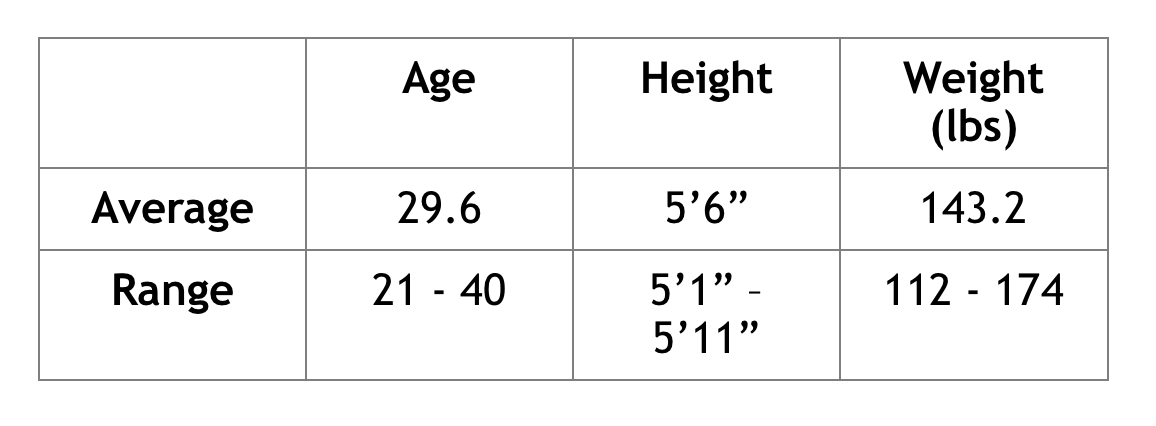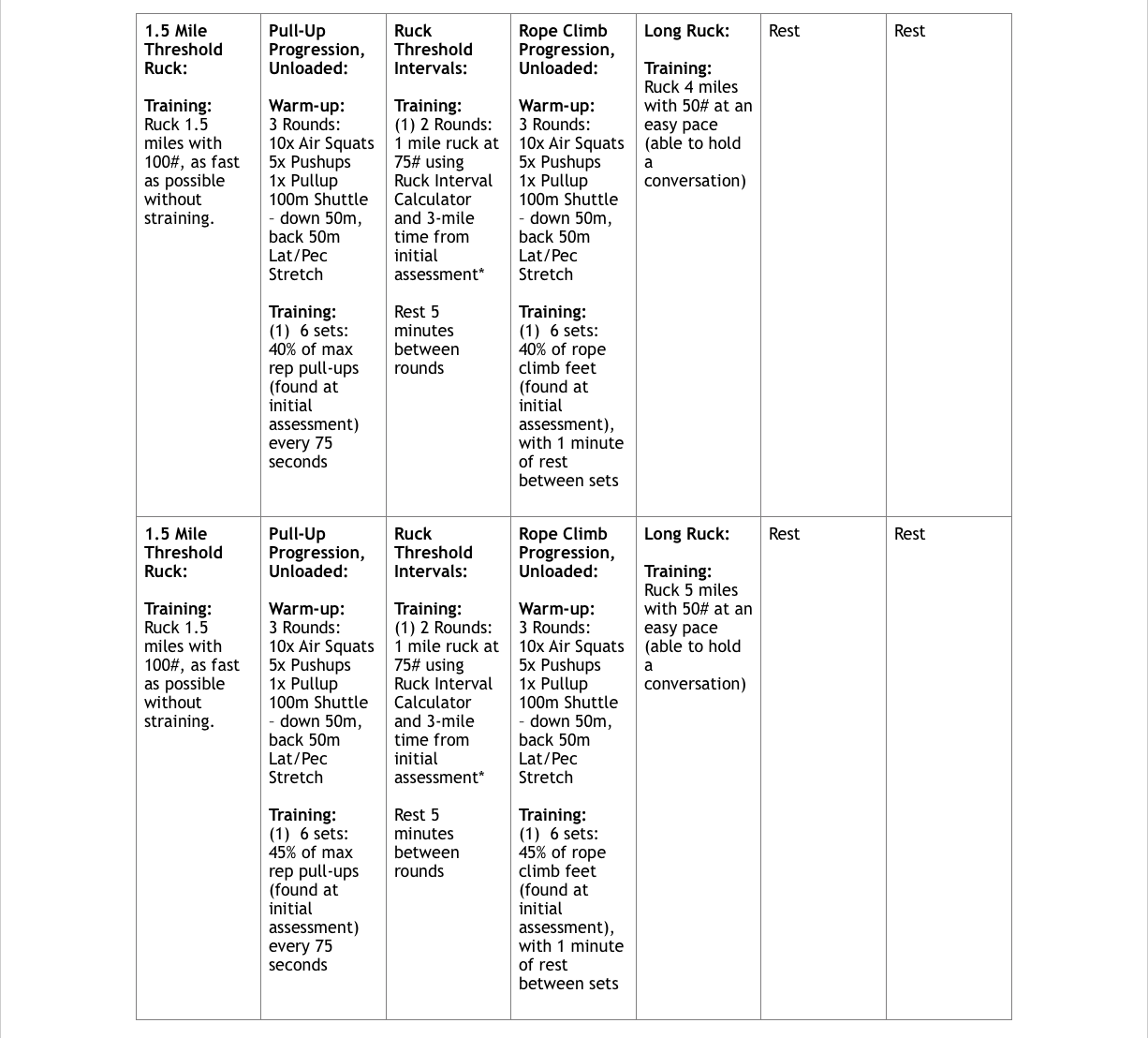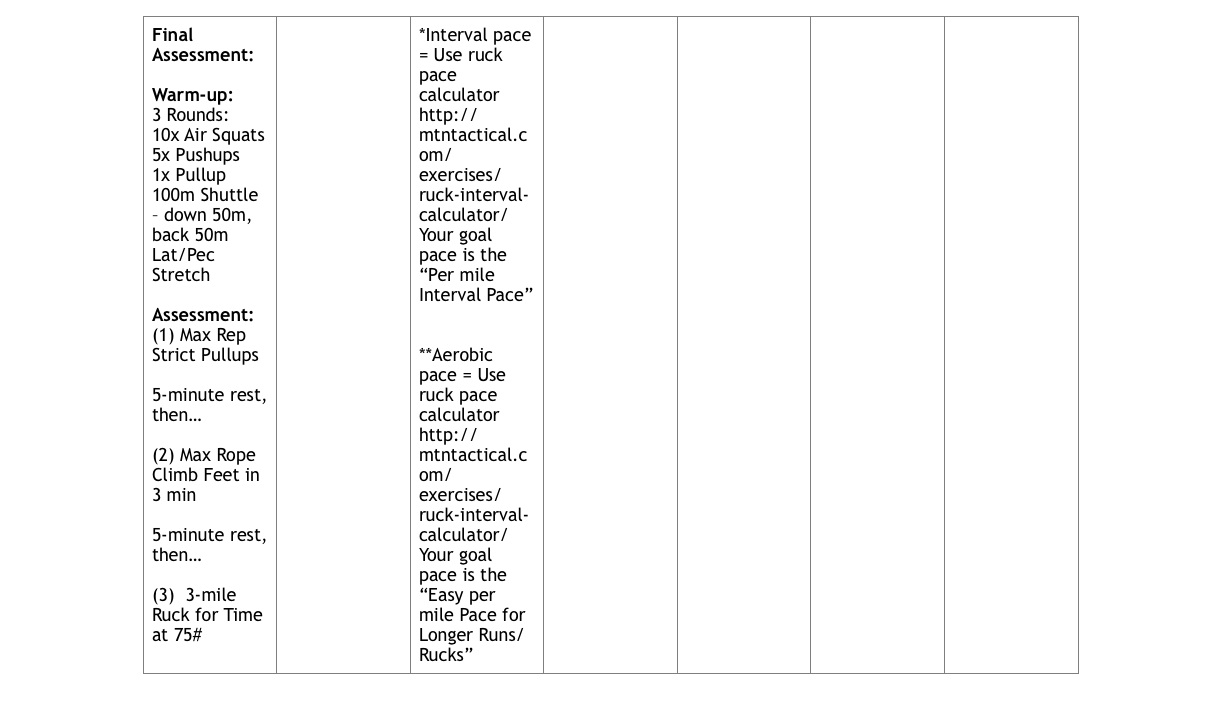
By Jaimie Cunningham
In a previous article, I discussed the background research and theory that led to the development of this study. The study recently concluded.
Study background, design and results are below:
BACKGROUND
Females are entering combat roles as well as attending military schools and selections that were previously open only to males. During these courses and selections, such as Ranger School and the Marine Infantry Officer Course, common problem areas for females include upper body pulling strength and heavy rucking.
We found no previous studies which researched the best ways to specifically prepare females for the fitness demands of these combat-related military schools and selections.
The purpose of this study was to test the effects of two different fitness programming protocols on females and compare the resulting improvements in rucking and upper body pulling strength improvements.
STUDY DESIGN
Participants:
Fifty-nine females initially signed up to participate. Of those thirteen completed the assessment and full study. Of these 13, one participant’s data was not included in the results analysis due to an injury prior to the start of the study that was believed to skew her results. Of the 12 remaining participants, 11 completed all components of the study (rope climbs, pullups, and ruck), and 1 participant completed only the ruck portion of the study. Of the 12 participants that were used in the results analysis, 7 were military and 5 were civilian.
Below is the average age, height, and weight of the 12 participants:

Assessment:
All study participants completed the below assessment at the beginning and end of the training protocols:
1. Max Rep Strict Pullups
5 min Rest
2. Max Feet of Rope Climb in 3 minutes
5 min Rest
3. 3-Mile Ruck for Time at 75#
Programming Protocols:
Two 3-week long programming protocols were tested:
Protocol 1: Variable Weight Ruck + Bodyweight Pulling
Protocol 1 consisted of 3 days/week of rucking – one day each of intervals, threshold ruck, and longer aerobic ruck. Rucks were performed at variable weight between 50-100#. One pullup workout and one rope climb workout were performed each week using a progressive training volume protocol. All pullup and rope climb workouts were performed at bodyweight.
Seven (7) of the study participants completed this protocol.
Protocol 2: Same Weight Ruck + Loaded Pulling
Protocol 2 consisted of the same 3 days/week of rucking, but all rucks were performed at 75#. Protocol 2 also included one pullup workout and one rope climb workout per week, but the progression started at a lower percentage to make up for the additional loading. Pullup workouts were performed loaded at 15# and rope climbs were loaded at 25#.
Five (5) of the study participants completed this protocol.
The full protocols used in this study can be found at the end of this article.
RESULTS
Compliance with the workouts during the study was excellent. Only 2 lab rats missed 1 training session each, and all other lab rats completed all training sessions.
Both protocols led to improvements in all metrics, with improvements ranging from 10-31%.
The rope climb and ruck improvements were similar between groups.
Protocol 2 had a greater percentage improvement in max rep pullups (11% for Protocol 1 vs 19% for Protocol 2).
The chart below shows the results.

DISCUSSION
Both protocols saw the greatest percentage improvement in the rope climbs. This is not surprising since rope climbs are a technique-based exercise and regular practice of rope climbs likely led to improved technique and confidence. Therefore, the improvement seen in rope climbs was likely due to a combination of improved technique and increased upper body strength.
In this study, there was a greater improvement in max rep pullups when lab rats performed a loaded pullup progression vs a bodyweight progression. This indicates that females may benefit from training pullups with load in order to maximize their upper body pulling strength.
Both groups saw similar improvements in 3-mile ruck time at heavy load (75#) at the end of the 3-week study indicating that loading (same weight vs variable) did not have a significant effect on their results.
ACTION ITEMS/MOVING FORWARD
- Females should consider performing a progression of loaded pullups in order to improve max rep pullups.
- 3 days/week of heavy rucking at either variable or same weight loading is effective at improving heavy rucking speed in females.
Questions/Feedback?
Email coach@mtntactical.com.
About the Author
Jaimie is a Physical Therapist and strength coach in Southern Pines, North Carolina. This study is part of her MTI Fellowship.
Below: Full Training Protocols






You Might Also Like MTI’s 3-Week Push Up & Pull Up Improvement Plan